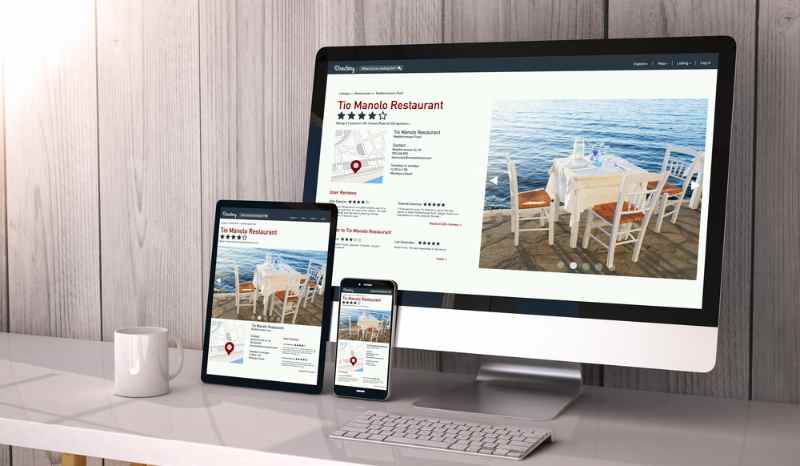When people look for a restaurant, whether for a special occasion or just a quick lunch, what’s the first thing they do? Chances are, they look online, and when they find a promising restaurant, they check out its website. What does the food look like? How’s the atmosphere? What are the prices like? A good website will answer all of these questions. For restaurant owners, good website design is key to attracting new customers. Following the 7 steps below can ensure your website succeeds at promoting your restaurant and getting people in your door.
Step 1: Start with the basics
You’d be surprised how many businesses fail to put their address, days and hours of operation and phone number where it’s easy to find. Don’t hide this information way down at the bottom of your website; it’s critical for diners to know! Ideally, you want the information to appear on every page. Be sure to include a map so customers can easily find your restaurant.
Step 2: Add professional photography
Your restaurant website is not the place to test out your amateur photography skills. It’s worth hiring a professional photographer to take mouthwatering shots that will attract customers. Include your most eye-catching or best-selling menu items, being sure to include a variety of dishes (salads, meats, desserts, etc.) to show off the range of dishes you offer.
But it’s not all about the food. Also be sure to include photos of your restaurant’s interior and exterior, your staff and anything else that conveys the vibe of your restaurant. Customers should be able to tell if you’re a casual sandwich shop, romantic dinner spot or festive place for a group gathering.
Step 3: Include current menus
When customers are deciding where to eat, the first thing they look at is your menu. Posting your menu in a PDF format can make it difficult to read. PDFs are also time-consuming to update because you have to create a whole new PDF. Instead, make your menu a page on your website. That way, you can easily update it any time, adding seasonal items, current prices and more. (That’s just one way to work smarter, not harder, in your restaurant.) A searchable web page also allows users to search for specific menu items they want, such as putting in the word “vegan” or “gluten-free” to find the dishes they care about.
Step 4: Make it mobile friendly
Most people checking out your restaurant website are likely on a mobile device. They may be out and about, get hungry and grab their phones to look for a place to eat. Maybe they’re on the couch scrolling through their smartphone to find a restaurant that delivers. More than half of all website visits take place on mobile phones, and the number continues to rise. Google also takes mobile friendliness and speed of mobile loading into consideration when ranking your site in search results, so make sure your site loads quickly on all platforms. A good rule of thumb: When designing your restaurant website, think mobile first; then your website will naturally be easy to navigate and use on desktop, too.
Step 5: Encourage action
What do you want visitors to do when they get to your restaurant website? Make it easy and intuitive for them to take your desired actions. Including click-to-call buttons, online ordering functionality and online reservation buttons enables website visitors to connect with and buy from your restaurant. Prominently highlight these buttons with a call to action such as “Make a Reservation” or “Order Delivery Now.”
Step 6: Build relationships
Use your restaurant website to create a relationship with your customers. Make sure your social media buttons are prominently displayed so that website visitors can follow your business. You may even want to share some social media feeds on your site. Urge your website visitors to sign up to receive emails or text messages with news about your restaurant, special offers and more. Do you have a loyalty program? Make it easy for people to join online. Link to Yelp or any other online review sites where you have a presence and encourage customers to write online reviews of your restaurant.
Step 7: Test and launch
I know you’re excited about your new restaurant website, but before you launch, be sure to test its functionality. Enlist some friends or family members to help or round up some members of your loyal customer base. Have them spend some time exploring your website and give you honest feedback on how easy it is to use. Make any necessary adjustments to make your restaurant website the best it can be—and then launch!
A well-designed restaurant website is essential to success for today’s restaurant owners. For more details and ideas to help your restaurant thrive, check out this step-by-step guide to designing a restaurant website, learn what to do in the first few months after opening a restaurant and take a look at these 15 inspiring website designs.
Restaurant website design stock photo by Georgejmclittle/Shutterstock











